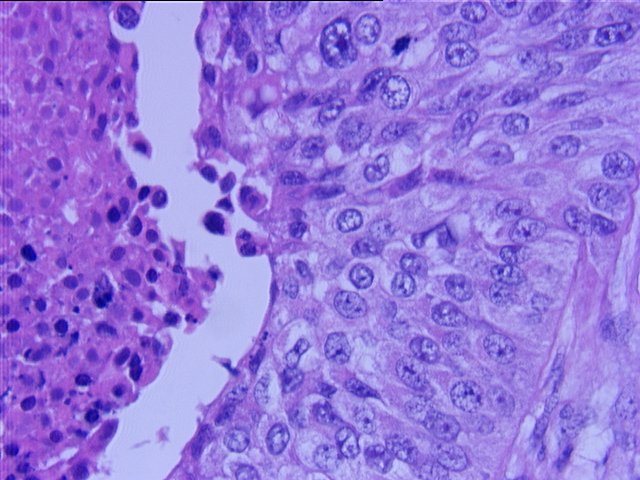Grading staging report. When your breast was biopsied the samples taken were studied under the microscope by a specialized doctor with many years of training called a pathologistthe pathologist sends your doctor a report that gives a diagnosis for each sample taken.

Pathology Outlines Squamous Cell Carcinoma
Understanding your pathology report.

Breast cancer grading pathology outlines. If a woman goes for a breast cancer screening mammogram and has no clinically palpable lump it is usually up to the mammogram to detect lesions that may be developing within the breastbut a woman may have proliferative new cell growth which is in most cases benign that will not be detected on. It is a description of what the cell looks like under the microscope the characteristics of which can tell a doctor how likely it is to grow and spread. Tumor grade is one of many items that will appear on your pathology report if you have breast cancer.
Pathology reporting of breast disease in surgical excision specimens incorporating the dataset for histological reporting of breast cancer high res june 2016 also of interest. The scores are then added to get a number between 3 and 9 that is used to get a grade of 1 2 or 3 which is noted on your pathology report. Unique to breast cancer the ajcc 8th edition created a second new category of stage classification called the ajcc prognostic stage groupthe ajcc prognostic stage group incorporates the tumors nuclear grade results from er pr and her2 testing as well as the results of multigene tests if performed into the scoring.
The importance of tumor grade in planning treatment and determining a patients prognosis is greater for certain types of cancer such as soft tissue sarcoma primary brain tumors and breast and prostate cancer. A higher grade cancer may grow and spread more quickly and may require immediate or more aggressive treatment. Grading breast cancer cells three cancer cell features are studied and each is assigned a score.
Although classic lobular carcinoma by definition is scored as 3 for lack of tubule formation cases will receive scores of 1 for nuclear pleomorphism and mitotic count will usually be low resulting in an overall score of grade i. Histological descriptions of proliferative cellular conditions found in breast cancer screening.

Pathology Outlines Polymorphous

Pathology Outlines Yolk Sac Tumor

Pathology Outlines Squamous Cell Carcinoma

Pathology Outlines Invasive Urothelial Carcinoma

Pathology Outlines Male Invasive

